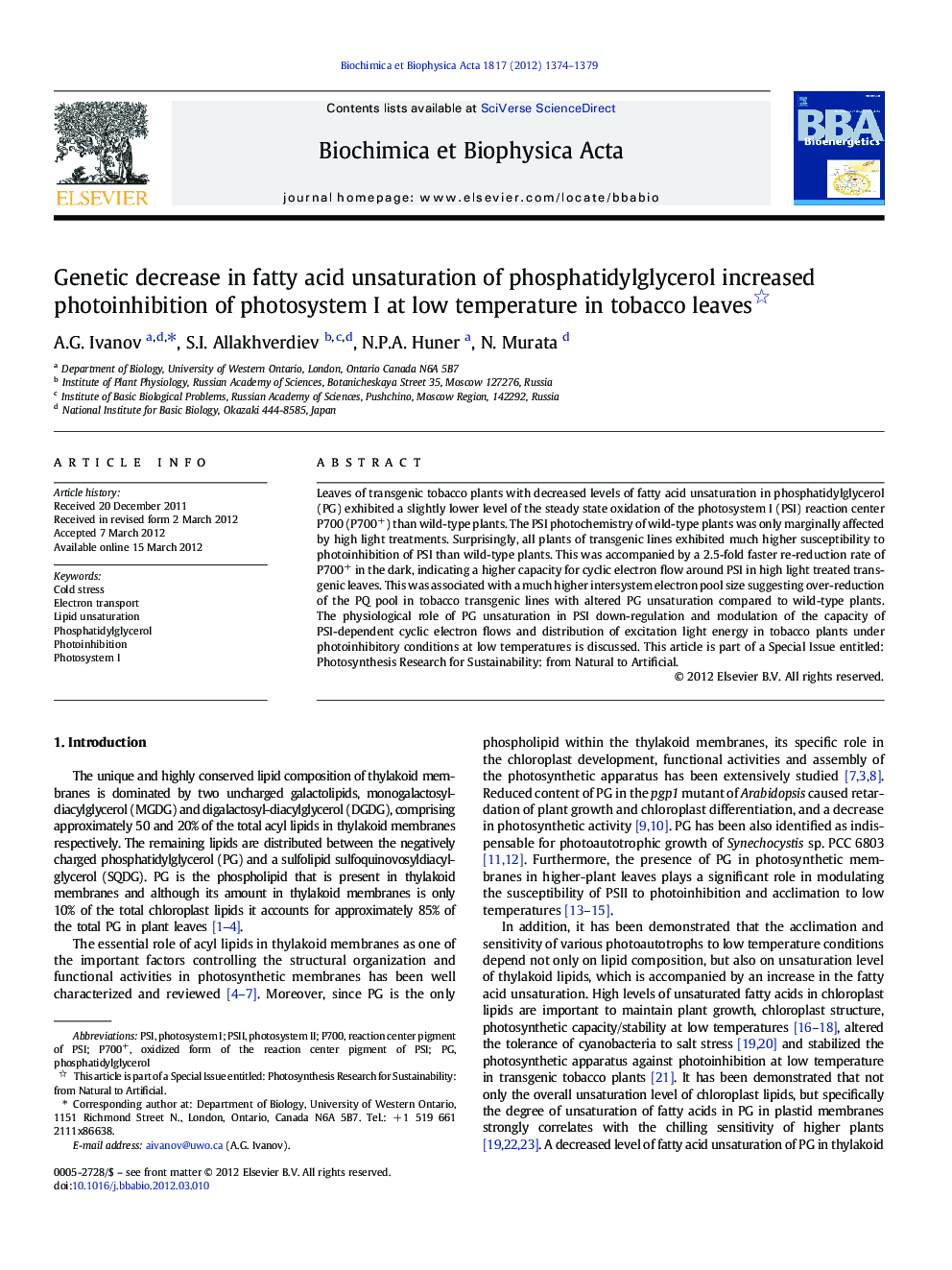| کد مقاله | کد نشریه | سال انتشار | مقاله انگلیسی | نسخه تمام متن |
|---|---|---|---|---|
| 1942412 | 1052610 | 2012 | 6 صفحه PDF | دانلود رایگان |

Leaves of transgenic tobacco plants with decreased levels of fatty acid unsaturation in phosphatidylglycerol (PG) exhibited a slightly lower level of the steady state oxidation of the photosystem I (PSI) reaction center P700 (P700+) than wild-type plants. The PSI photochemistry of wild-type plants was only marginally affected by high light treatments. Surprisingly, all plants of transgenic lines exhibited much higher susceptibility to photoinhibition of PSI than wild-type plants. This was accompanied by a 2.5-fold faster re-reduction rate of P700+ in the dark, indicating a higher capacity for cyclic electron flow around PSI in high light treated transgenic leaves. This was associated with a much higher intersystem electron pool size suggesting over-reduction of the PQ pool in tobacco transgenic lines with altered PG unsaturation compared to wild-type plants. The physiological role of PG unsaturation in PSI down-regulation and modulation of the capacity of PSI-dependent cyclic electron flows and distribution of excitation light energy in tobacco plants under photoinhibitory conditions at low temperatures is discussed. This article is part of a Special Issue entitled: Photosynthesis Research for Sustainability: from Natural to Artificial.
► Increased PG unsaturation in tobacco caused over-reduction of the PQ pool.
► Transgenic plants exhibited higher capacity for cyclic electron flow around PSI.
► Transgenic plants demonstrated increased photoinhibition of photosystem I.
Journal: Biochimica et Biophysica Acta (BBA) - Bioenergetics - Volume 1817, Issue 8, August 2012, Pages 1374–1379